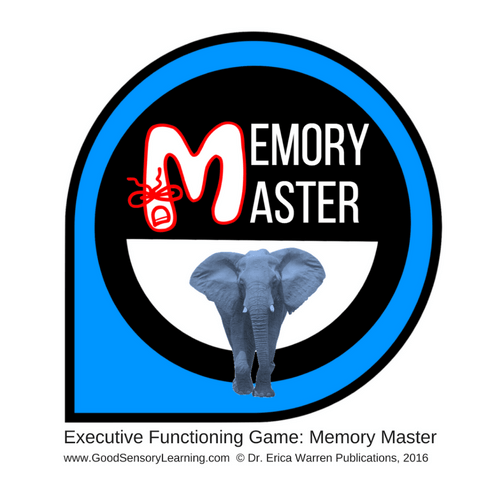
Let’s see: What’s the zaniest way you can combine light bulb with mouse? I don’t know about you, but here’s what I just imagined:
The memory master method how to#
The secret for this to work is to make the mental scene memorable: make it crazy, ridiculous, offensive, unusual, animated, nonsensical - in short, make it fun! (For details on how to effectively associate images, check out this article.) Our mission, then, is to create a mental scene combining light bulb and mouse.

Mouse seems a pretty good word for these letters, so we’ll go with it. Using our mnemonic table, we find that 30 translates to the letters m and s. The two images to combine would be the image for light bulb and the encoded image for 30. The way we’re going to do this is by imagining a scene, a scene that combines two images: the encoded number image along with a peg image that will be used to trigger the memory.Īs an example, suppose you want to buy a light bulb, and you must remember that it must be a 30-Watt one.

We already have an image, now we’ll need a way to glue it in our minds. Concrete nouns - such as objects or animals - always work better than abstract nouns, adjectives or verbs. When coming up with words, choose those that are easy to visualize.By the same token, mute letters (such as the b in debt) should be ignored. If a word has double letters that account for just one sound, you count only one sound (ex: the r sound in cherry counts as only one number). The conversions are strictly phonetic, that is, based on how the words sound - not how they’re spelled.There are just a couple more notes to bear in mind: The conversion process may seem a little slow and cumbersome at first, but with just a little bit of practice it becomes second-nature. ‘Mouse’, for instance, becomes 30 (3 for m and 0 for s vowel sounds are ignored). The word rain comes naturally to me.ĭecoding from word to number is even more straightforward. We should fill the gaps between the letters using the ‘neutral’ elements (from the last row of the table: vowel sounds, w, h or y). These sounds can be used anywhere without changing a word’s number value.Īs an example, let’s take the (in)famous number 42.Īccording to the mnemonic table, the digits in the number 42 translate to r and n respectively. b sounds similar and resembles a 9 rolled around (also notice how your lip movement is the same when pronouncing these letters.) f sounds similar (notice how your teeth touch your lips for both). These letters also have a ‘whistle-like’ sound, and 6 looks like a whistle.Ĭapital K contains two 7s (on their sides, back to back). The last letter of four, also 4 and R are almost mirror images of each other.Ī script j has a lower loop like 6. M has three downstrokes, also m looks like a 3 lying on its side. The others have a similar sound.ĭ and t have one downstroke and sound similar (notice the tip of your tongue as you say them). The mnemonics are easy to learn (it shouldn’t take more than 20 minutes to fully master them) and, once learned, they can be used for life. The table shows how to transform the digits 0-9 into corresponding sounds which we’ll eventually use to form words. The heart of the Major system - and the key to convert numbers to images and vice-versa - is a 10-item mnemonic table.

When we do that, committing these numbers to memory is a snap. Numbers hardly qualify.Īnd that’s what the Major system is about: converting abstract, dull numbers into vivid, striking images. As I explored in a previous article, our brains usually work best using lively, vibrant images. Although they are represented visually by symbols, they don’t feel very real or appealing to our brains. The problem lies in the fact that numbers are abstract concepts. Our brains are notoriously poor at memorizing numbers. (And yes, you’ll also be able to pull off the pi digits stunt if that’s what catches your fancy.) If you think you could use a boost to your memory, or just want to jog your brain a little, here’s a great way to do it. Meet the Major memory system, one of the most powerful techniques around for memorizing numbers. But remembering phone numbers, passwords, PINs, birthdays and all sorts of everyday numbers - that’s something I resonate with! Did you ever want to be able to recite pi up to 22,500 decimal digits? As for me, I never felt attracted to that sort of stuff.


 0 kommentar(er)
0 kommentar(er)
